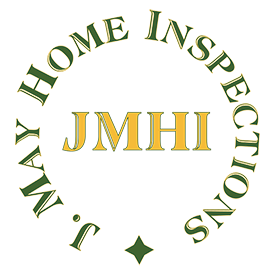You See Roses and I See Thorns
Spring is here and so are the sneezes. The best thing about spring for me is that I can warm up my weed whacker and effortlessly slice through green things that sprout to mar the cracks in the sidewalk and the barren brown of my wood-chip “lawn.” Though I can appreciate the landscaped beauty at other homes and occasionally I do say something nice if the seller has done a superior job, I’m not exactly a plant lover. Home inspection suits me because I can always find something negative to say about the greenery at a home.
Actually, a neatly maintained and landscaped exterior is a sure sign that a seller cares about a home; a home surrounded by weed trees is a sign of neglect that usually signals the likelihood of other problems. Weed trees close to the foundation of a home, when they become big enough, can actually damage the foundation.
Overhanging branches from nearby trees can create several problems. The shade inhibits drying and the leaves clog gutters. Occasionally, I have seen branches blown by wind scrapping across roof shingles and damaging them. I heard about one home where the branch actually made a hole that allowed enough water into a wall to decay it; the subsequent termite infestation made it necessary to rebuild a whole side of the house. Overgrown shrubs can cause moisture and paint problems, and even a safety hazard it they block access to stair handrails.
Allowing ivy to grow up the side of a wood-clad house is particularly foolish. The ivy traps moisture, damages finish and promotes wood decay. At one home, I moved an ivy stem from the foundation of a house and found a termite tube behind the stem, completely hidden from view. At another home, just a few leaves of a shrub touched the wood trim a the corner of the house. As a result, they channeled rain water from the shrub down the house trim. The wood for several feet below became completely decayed and infested with carpenter ants.
On your first visit, you should even look at the neighbor’s trees. This past week, I noted a bent gutter at the back of a garage, many chunks of bark on the roof and a depression in the roofing; a huge tree stood at the property line (on the neighbor’s side!) that appeared to be dying. Any one of the many large overhanging branches could do serious damage to the house if it fell. I recommended that the buyer discuss the issue with the neighbor.
Planters at the inside or outside of a house can be a problem if the surrounds are not adequately protected from moisture. I often find damage in hardwood floors where presumably at one time someone had a large plant. If there are rugs under such a plant, be sure to check the floor beneath the rug before the closing to see if there is decay. Occasionally, a homeowner will build a planter at the outside of a house and fill it with soil in contact with the house siding. This can cause severe decay that is inviting to both termites and carpenter ants.
One final caution for allergy sufferers. Take note of the plants around a house; try to avoid or eliminate those-like poison ivy-to which you or family members may react. And avoid Ficus benjamina, the “weeping fig tree.” This popular indoor tree with green and white leaves can cause serious rash, allergy, conjunctivitis and even asthma in sensitized individuals. So, if the seller offers to “include” the weeping fig tree that is too large to move, don’t take it.

